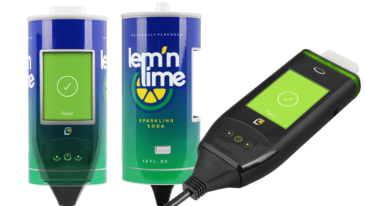
It’s likely that you’re familiar with the concept of drunk driving. In the United States, this offense, most commonly a DUI or “driving under the influence,” is taken seriously and can result in hefty fines, a state-mandated installation of a car breathalyzer, and even jail time. However, did you know that you can be charged with a driving offense even if there is no alcohol in your system? Further, did you know that some states use a DWI vs. a DUI?
In this article, we’ll explain everything you need to know about a DWI and a brief comparison to the facts about driving under the influence.
What is a DWI?
The answer to this question depends on the state you live in. Typically, a DWI means one of two things:
- Driving while impaired
- Driving while intoxicated
Generally, these two definitions are used interchangeably and relate to an offense given to a motorist by law enforcement; one which means the driver was not capable of operating their motor vehicle safely, putting the lives of themselves and others at risk.
Additionally, a DWI can be used to identify a “type” of offense that might be less or more severe than a DUI. For instance, in Texas, you can receive a DWI offense that is a class A misdemeanor, but a DUI misdemeanor will never exceed a class C.
What States Issue a DWI?
Drunk driving, intoxicated driving, and impaired driving are illegal across the United States. Unfortunately, there’s no federal penalty that is ubiquitous for the charges rendered against someone driving while impaired. This is why if you’re living in California, you’ll be charged with a DUI, but if you’re living in Arkansas, it’ll be a DWI.
Further, each state’s laws regarding intoxicated or impaired driving are different. The most common “form” of a DWI law goes as follows: if the driver has a BAC (blood alcohol content) of over .08% or if they are on some type of drug that renders them incapable of driving safely, they will be arrested and charged. And:
- All 50 states have passed a zero-tolerance law that means an underage driver will be charged with a DWI or DUI even if their BAC is as low as .02%
To that end, what states commonly use DWI rather than a DUI? It’s important to note that in the list below, the state can use various types of DWIs or even—like Texas—have both DWIs and DUIs. The most common states to issue a DWI are:
- Arkansas
- Minnesota
- Missouri
- New Jersey
- New York
- New Hampshire
- North Carolina
- Rhode Island
- Texas
What Are the Penalties of a DWI?
Again, the penalties of a DWI are going to vary state-to-state. However, there is a certain “formula” to be expected when it comes to the consequences of driving while under the influence. Let’s take Minnesota for example, which defines a DWI as being in control of a motor vehicle while:
- Currently on drugs or under the influence of alcohol
- Under the influence of a substance which greatly impairs motor function, cognition, and the ability to drive
- Driving with a BAC above the legal limit; .08% or higher
- Having a Schedule I or II drug in the system
In which case, if a motorist is charged, they should expect:
Administrative Consequences
Depending on the circumstances of the offense—for instance, if it’s the first time and how high the BAC was—there will be certain administrative consequences. This could be anything from:
A suspended license
For a first-time offense, a DUI conviction can affect an individual’s driving privilege resulting in a suspended license for up to a year.
A restricted license
The driver will have to use an ignition interlock device (IID), or car breathalyzer as mentioned, in order to drive their vehicle and may only be permitted to drive certain routes. This is usually reserved for work, school, or any major obligations.
Plate Impoundment
This means the driver must surrender the license plate(s) of any vehicle(s) they own. To register the vehicle again, the individual must request a specific type of license plate that indicates their prior offense.
Criminal Consequences
Being that most DWIs result in an arrest, at least some jail time is expected. Depending on the circumstances, this can be anywhere from a matter of hours to an entire year. Additionally:
Costs & Penalties
If a DWI results in nothing more than a blow to the bank account, then that’s the best that can come from such a bad situation. Of course, a DWI that is the result of a crash which caused an injury or fatality is another event entirely. However, a “standard” DWI charge usually comes with the below costs:
- Criminal fines and penalties
- Rehab fees and surcharges
- Treatment costs
- Bail (if the case is bad enough)
- DMV fees
- Plate fees
- Ignition interlock devices fees
The general rule of thumb, nationwide, is that someone who receives a DWI should expect to:
- Pay $10,000 for the entire ordeal
Avoid Driving Impaired
A DWI conviction, in most cases, is no different than a DUI. It’s a serious offense that bears serious consequences, one you never want to be on the receiving end of. Be sure that you know the laws regarding a DWI in your state, or that single beer you drank before stepping into your vehicle could be enough to throw you into the “impaired” category. That single beer could cost you up to 10 thousand dollars.
Better yet, be safe, smart, and abide by your state’s rules and regulations. When you drive impaired or under the influence, you’re putting yourself and others at risk. A single car ride is never worth risking lives.
Sources:
NOLO, Legal-Encyclopedia. DUI/DWI Laws in Your State. Retrieved from:
https://www.nolo.com/legal-encyclopedia/dui-dwi-in-your-state-33049.html
BacTrack. Understanding DUI and DWI. June 30th, 2015. Retrieved from:
https://www.bactrack.com/blogs/expert-center/35043973-understanding-dui-and-dwi
CA.GOV Dept of Motor Vehicles. Arrest for Driving Under the Influence DUI General Information. Retrieved from:
https://www.dmv.ca.gov/portal/dmv/detail/dl/driversafety/dsalcohol
Johnson, Johnson & Bear, P.C. Texas DWI Attorneys. Texas DWI Laws: Facts, Jail Time & Penalties – DWI Guide. Retrieved from:


